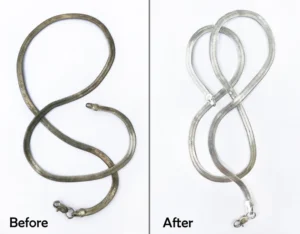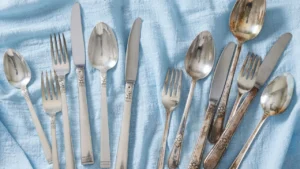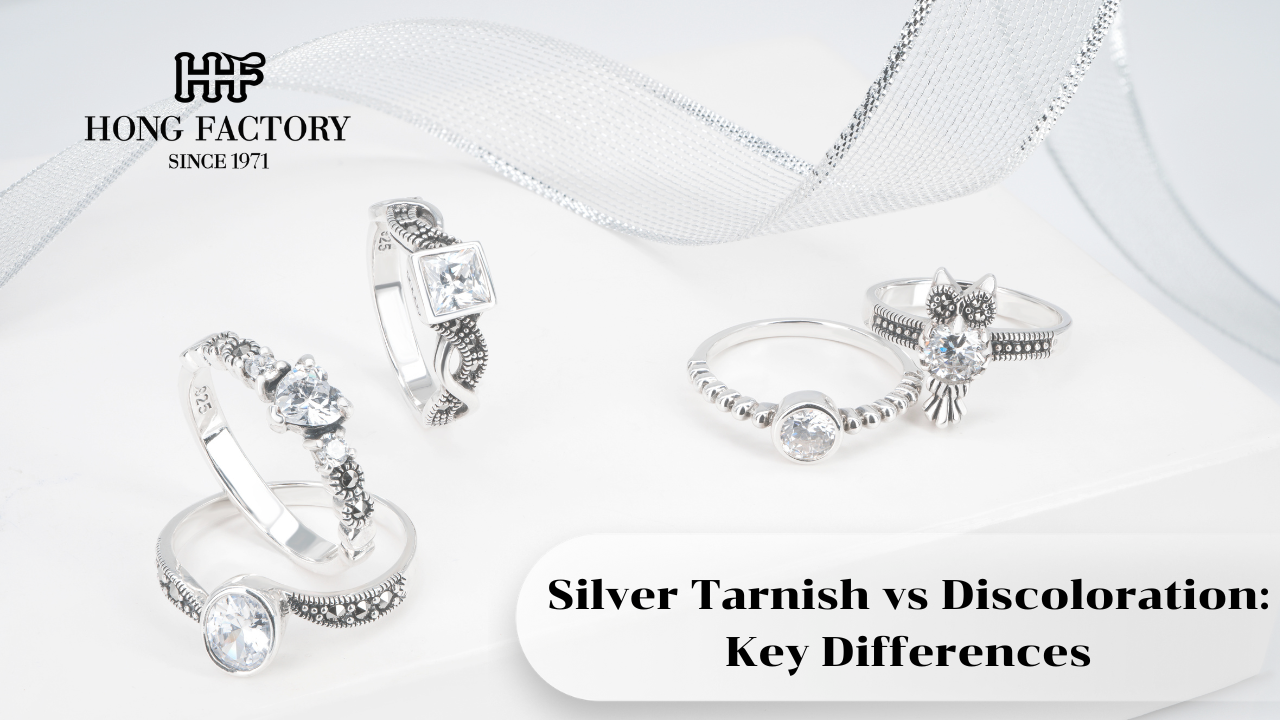When it comes to silver jewelry and accessories, many people confuse silver tarnish with general discoloration. While both can affect the beauty of your pieces, they have different causes, appearances, and solutions. Understanding these distinctions can help you better care for your silver items and preserve their shine. mood ring color meanings
What is Silver Tarnish?

Silver tarnish is a natural chemical reaction that occurs when silver comes into contact with sulfur-containing substances in the air or environment. Over time, the silver surface reacts with hydrogen sulfide, forming a thin layer of silver sulfide. This layer causes the darkening or dulling effect commonly recognized as tarnish.
Tarnish typically appears as a yellow, brown, or black film on the surface of silver. Unlike simple dirt, this chemical layer adheres tightly to the metal, requiring special cleaning methods to restore the original shine.
Causes of Discoloration in Silver
Discoloration, on the other hand, may come from various sources that are not necessarily chemical reactions with sulfur. Common causes include:
- Skin Oils and Sweat: Natural body oils and perspiration can transfer to jewelry, leading to uneven dullness or dark patches.
- Cosmetics and Lotions: Perfumes, lotions, and makeup can leave residues that build up on silver surfaces, causing cloudy or greenish stains.
- Environmental Factors: Humidity, dust, and exposure to everyday pollutants can result in general fading or discoloration.
Unlike silver tarnish, discoloration may appear in multiple colors, such as green, blue, or cloudy white, depending on the external factors involved.
Silver Tarnish vs. Discoloration: Visual Differences
One way to identify whether your silver piece has tarnished or simply discolored is to observe its appearance:
- Tarnish: Usually presents as a uniform darkening, especially black or deep brown. It often spreads across the entire surface or in areas most exposed to air.
- Discoloration: Often patchy, inconsistent, or oddly colored. It may show up as green spots (from copper alloy reaction), cloudy haze, or oily residue.
Understanding these visual clues can help you choose the right cleaning solution for your jewelry.
How to Treat Silver Tarnish

Since tarnish is a chemical reaction, it requires methods that reverse or remove silver sulfide. Common cleaning approaches include:
- Silver Polishing Cloths: Specially treated cloths that gently remove tarnish from the surface.
- Mild Chemical Cleaners: Commercial silver cleaners or homemade solutions like baking soda and water paste.
- Professional Cleaning: Jewelers use ultrasonic machines or dips to restore heavily tarnished silver.
Because tarnish is inevitable over time, especially in humid or polluted environments, regular cleaning and proper storage are essential.
How to Prevent Discoloration
Preventing discoloration involves reducing exposure to residues and harmful environmental factors. Some effective steps include:
- Remove Jewelry Before Activities: Take off silver jewelry before swimming, exercising, or applying lotions and perfumes.
- Store Properly: Keep silver in anti-tarnish pouches or airtight containers to limit exposure.
- Regular Maintenance: Wipe jewelry with a soft, dry cloth after use to remove oils and dirt.
While discoloration may not permanently damage silver, it can diminish its beauty until cleaned.
Silver Tarnish vs Discoloration: Why the Distinction Matters
Recognizing the difference between tarnish and discoloration is important because they require different approaches. Treating tarnish with just soap and water often proves ineffective, while using harsh chemicals on minor discoloration may cause unnecessary wear. By correctly identifying the issue, you can ensure your silver jewelry remains brilliant for years to come.
Both silver tarnish and discoloration are common concerns for anyone who owns silver jewelry or accessories. Tarnish results from a natural chemical process with sulfur, while discoloration is often due to environmental and external factors. Understanding these key differences allows you to care for your silver more effectively, keeping your pieces shining beautifully and lasting longer.
